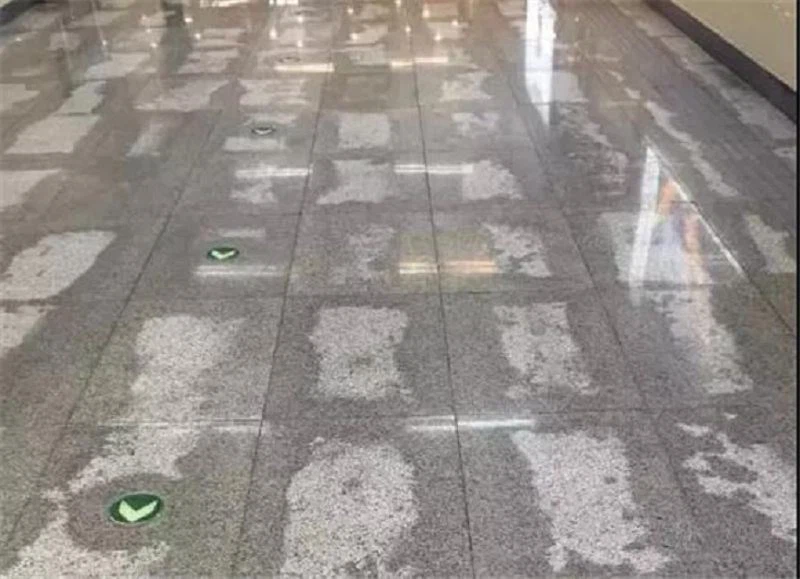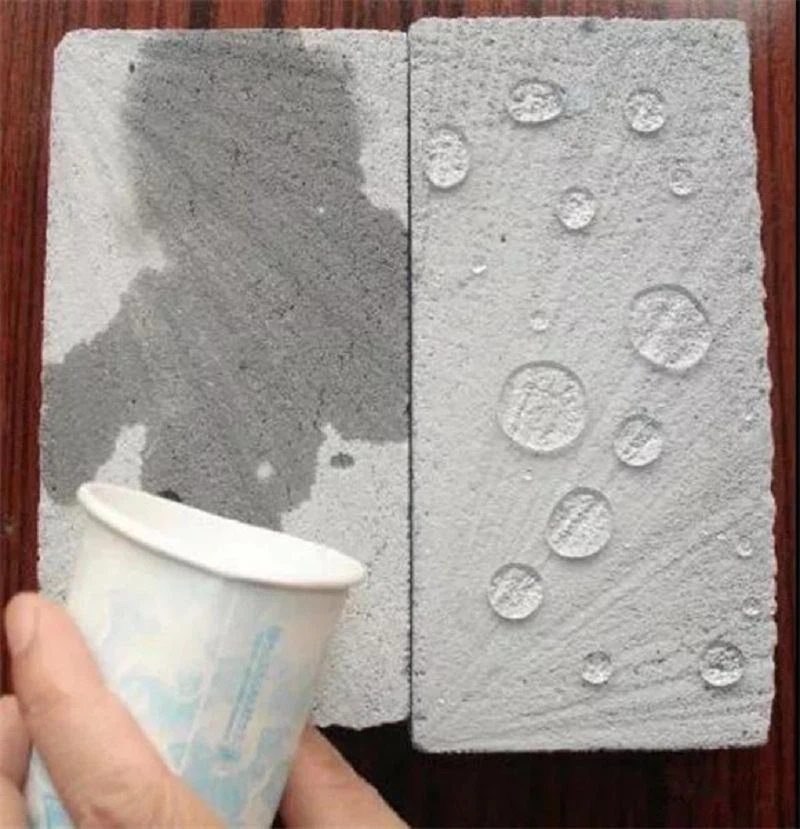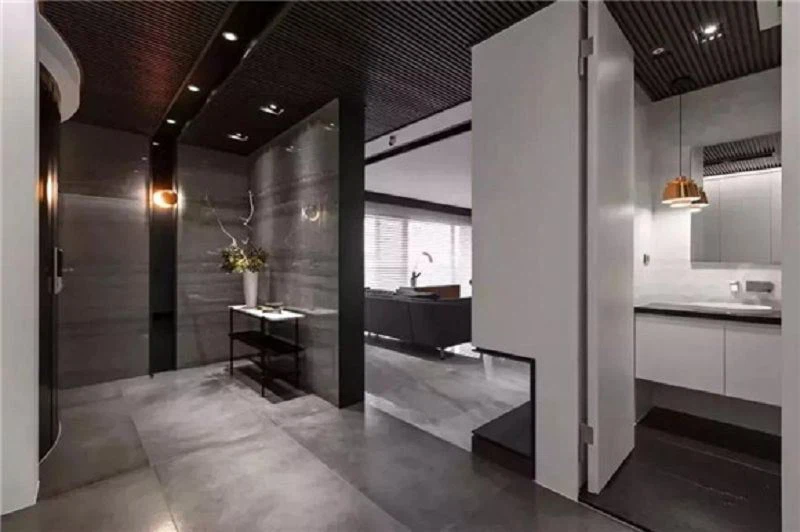Common misunderstandings of stone protective agent,
make mistakes if you are not careful!
In recent years, with the continuous expansion of the stone market, stone protection has also received increasing attention. Now, most stone products will use stone protective agent as a protective measure before leaving the factory. A large number of protection requirements have also spawned a new industry-stone protection chemical industry. In recent years, stone protective agents have been increasing.
So, what are the common misunderstandings in the use of stone protective agent?
01)mistook water repellent for antifouling agent
Some people often confuse waterproofing agents with antifouling agents, thinking that waterproofing agents also have antifouling functions.
In fact, this view is wrong: the role of water repellent is waterproof. After the surface of the stone is painted with water repellent, it can not be invaded by water, thereby preventing water from penetrating into the stone to produce water marks.
At present, most of the water-repellent products do not have anti-fouling performance, and a small number of water-repellents have certain anti-fouling performance, but they cannot be compared with the anti-fouling performance of antifouling agents. If anti-fouling treatment is not carried out, pollutants can easily enter the stone surface and produce various erosion spots.
(Unbearable water spots)

However, some good antifouling agents have the dual functions of waterproofing and antifouling. Therefore, in the protective treatment of stone, antifouling agents should be selected as far as possible.
It should be noted that antifouling agents cannot prevent all pollutants from corroding. Some common corrosive liquids, such as vinegar and carbonated beverages, may not have much effect.
02)mistakenly thought that after brushing with water repellent, you are not afraid of water
Some people think that after the stone has been brushed with a waterproofing agent, they are no longer afraid of water erosion, even if they are soaked in water for a long time, there is no problem at all.
In fact, this view is also wrong. Whether it is household water, domestic sewage, common liquids or rainwater in nature, the water may contain various chemical substances and mineral elements. Some chemical substances and mineral elements may react with the waterproofing agent, making the protection of the waterproofing agent ineffective, causing the liquid to penetrate into the stone and produce water spots.
(Waterproofing agent can make the stone get a certain waterproof effect)
Therefore, in the course of using the stone, when you see the liquid staying on the surface of the stone, it is better to remove it in time to ensure that the stone will not be damaged by water.
03)mistakenly thought that after brushing with antifouling agent, you will not be afraid of pollution
is similar to the logic that some people think that stone is no longer afraid of water erosion after being brushed with water repellent, and some people think that as long as stone is brushed with antifouling agent, they are no longer afraid of pollutants.
In fact, this view is also wrong. If the pollutants adhere to the surface of the stone for a short time, the surface of the stone will not leave traces of pollution after cleaning in time, but if the pollutants adhere to the surface of the stone for too long, the surface of the stone may still be gradually eroded by the pollutants , Produce various erosion spots.
Therefore, once contaminants are found on the surface of the stone, they should be removed immediately.

04)mistakenly believe that universal protective agent can do everything
Some stone protective agent manufacturers will sell universal protective agents that can be applied to various types of stone to consumers.
But in fact, this kind of universal protective agent does not exist, because it is impossible to have a universal protective agent that can change its performance to meet the needs according to various actual conditions.
When choosing a stone protective agent, in addition to having a better protective effect, the type of stone, the surface condition of the stone, the decorative effect required for the stone, and the climate environment in which the stone is used are all important considerations.
Different stone protective agents will have different protective effects on the stone. Granite and marble have special protective agents; stone with strong decorative effect, there are brightening protective agents that can deepen the color of the stone, the primary color protective agent that can maintain the original color of the stone, and the brightening type that can increase the gloss of the stone Protective agent: According to the actual protective effect, there are water-repellent protective agent, water-repellent protective agent, oil-proof protective agent, etc.; according to the actual use location, there are surface protective agent and bottom surface protective agent. Therefore, in the case of protection requirements, the most suitable stone protection agent should be selected according to the actual situation.
(With so many different uses and styles of stone slabs, how can it be possible that all the problems can be solved with only one protective agent?)

05)mistakenly believe that the larger the water droplets, the better the waterproof performance
Some people believe that when liquid is sprayed on the stone surface treated with stone protective agent, the larger the water droplets on the surface, the better the waterproof performance of the stone protective agent.
In fact, this view is also wrong. Because of the current stone protective agents, there are two different types of products, namely waterproof and hydrophobic.
Waterproof stone protective agent can prevent water and water-based pollutants from penetrating into the stone, but the water can spread on the surface of the stone without forming obvious water droplets. The hydrophobic stone protective agent can make the liquid form obvious drops of water on the stone surface, and can prevent water and water-based pollutants from penetrating into the stone. Therefore, it is impossible to judge the waterproof performance by the retained water droplets.
(The bigger the water drop, the better?)

In addition, some stone protective agents will try to maintain the air permeability of the stone pores in order to make the moisture inside the stone volatilize. After brushing the stone with this kind of stone protective agent, the water may gradually enter the stone after it is retained on the surface, but after a period of time, the water vapor will naturally escape.
06)mistakenly believe that the protection performance of the stone that has just been protected is the best
Some people think that the stone that has just been brushed with stone protector must have the best protective performance. Therefore, some people will do the protection test immediately when they get the finished stone. If the test result is not good, they will judge that the stone protection agent is not good.
In fact, this judgment is also problematic. Because the stone protective agent also needs some time of precipitation to exert the best protective state, it can be as short as a few days and as long as a week. For stone products that have just left the factory for a few hours, the stone protective agent has not yet fully acted on the surface of the stone. If it is tested immediately, it is naturally impossible to obtain good test results.
07)mistakenly thought that the expensive one must be the most suitable
Of course, the current stone protective agent market is still in the stage of quality based on price. Most of the time, choosing the more expensive stone protective agent of the same type can indeed achieve a relatively better protective effect.
But if you think that choosing an expensive stone protectant must be the most appropriate based on this, then you are wrong.
When choosing a stone protective agent, you should also follow the principle of “appropriate and suitable material”, and try to decide what type of protective agent to choose based on the actual spatial conditions of the stone product, the characteristics of the stone material, and the overall decorative effect.
Some environments that are easy to hide dirt, such as bathrooms, kitchens, etc., should try to choose better protective agents. In the same way, stone for wall can choose a protective agent that is relatively cheaper than stone for floor.
In addition, for the very expensive stone, it is natural to choose the best stone protective agent. However, granite has the characteristics of stronger surface compactness and low water absorption, so relatively ordinary stone protective agents can be selected.
In any case, the use of stone protective agent should be judged according to the actual situation. Sometimes, all choose expensive stone protective agents, which will not only seriously affect the cost, but also may not achieve the best protective effect.
